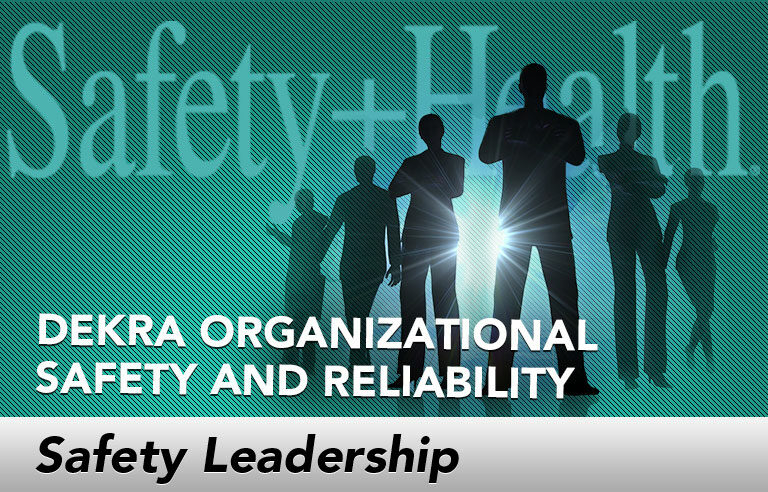Safety Leadership: Making SOPs a real safety tool

Editor’s Note: Achieving and sustaining an injury-free workplace demands strong leadership. In this monthly column, experts from global consulting firm DEKRA Insight share their point of view on what leaders need to know to guide their organizations to safety excellence.
Many incident investigations involving human error cite “failure to follow procedures” as the root or contributory cause. Yet, rarely does the investigation go any deeper to examine why standard operating procedures (SOPs) weren’t followed. A deeper dive into procedure usage shows two primary reasons why these performance tools are not used as they need to be.
-
Verbal emphasis vs. action emphasis
In most industries, the use of operating procedures is given verbal emphasis (as in, “make sure you follow procedures”), but not action emphasis (as in practiced or drilled steps of work). Management tends to point fingers when errors are documented in incident reports but tolerates procedural drift in-between those incidents. In contrast, airline pilots use pre-takeoff checklists consistently – even though the steps for takeoff for each airplane type are the same every time – because they and their leaders embrace procedure usage as the only way to ensure performance reliability. There is no procedural drift here because SOPs are valued and consistently practiced and drilled. -
Compliance documents vs. active safety tools
Many SOPs contain exhaustive details to demonstrate to OSHA that the organization has established this required safety control system. As an unintended byproduct, leaders pay insufficient attention to the ease of procedure usage. Often, the visual design, format and real-time clarity of operating procedures is poor, making SOPs difficult to use at critical times (e.g., during an upset in the making). To make matters worse, SOPs often are contained in large manuals that are difficult to access quickly, or in electronic formats with insufficient search capabilities. Due to these difficulties, employees turn instead to their explicit memories to guide them through task performance during high-stress times.
Neuroscience research has confirmed, unfortunately, that human memory – and especially explicit memory, which relies on storage and retrieval mechanisms in the medial temporal lobe of the brain – is complex and frequently unreliable. A clear example of the dangers of memory reliance is illustrated in the case study of central line infections in the ICUs at Johns Hopkins Hospital.1 Here, highly trained medical specialists were relying on memory to recall the somewhat simple steps of procedure for preventing contamination of central lines. Unfortunately, their memories were inconsistent, resulting in high rates of infection that caused longer stays, more frequent return stays and even patient deaths. When a simple five-step checklist process was designed and implemented, beginning with the step of “Wash hands with soap!” the performance of these medical professionals improved dramatically. “Central Line Checklist” usage was determined to have prevented 43 infections and eight deaths, and saved the hospital $2 million over a 15-month period. Usage of the same checklist for an 18-month period in ICUs throughout Michigan saved more than 1,500 lives and an estimated $175 million in medical costs.
SOPs are a critical tool for communicating the safe, correct way to execute work tasks. But how SOPs are designed, written, accessed and practiced literally can make the difference between life and death. As organizational leaders, we must ask: Are our SOPs brain-aligned? Do they facilitate easy visual access to critical information? Are they specific and succinct? Do they call out clearly the action(s) an employee must take to perform a task reliably? And, do they include a forcing mechanism that ensures critical steps are not overlooked?
There is only one sure way to prevent future incidents in which “failure to follow procedures” is a root or contributory cause: Optimize SOPs for effective employee usage by applying neuroscience-based design and access principles.
Reference: 1. Gawande, A. “The Checklist Manifesto: How to Get Things Right,” 2009.
 Susan L. Koen, Ph.D., is an organizational psychologist and CEO and founder of RoundtheClock Resources, a partner of DEKRA Insight. Dr. Koen is an internationally recognized expert on human reliability, human fatigue in the workplace and high-performance work systems.
Susan L. Koen, Ph.D., is an organizational psychologist and CEO and founder of RoundtheClock Resources, a partner of DEKRA Insight. Dr. Koen is an internationally recognized expert on human reliability, human fatigue in the workplace and high-performance work systems.
Post a comment to this article
Safety+Health welcomes comments that promote respectful dialogue. Please stay on topic. Comments that contain personal attacks, profanity or abusive language – or those aggressively promoting products or services – will be removed. We reserve the right to determine which comments violate our comment policy. (Anonymous comments are welcome; merely skip the “name” field in the comment box. An email address is required but will not be included with your comment.)

